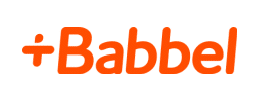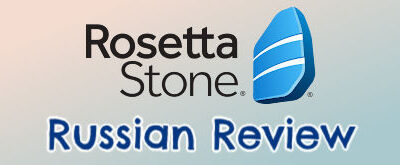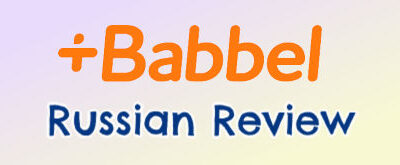Babbel is quite possibly the biggest name in the language learning industry. However, popularity doesn’t necessarily mean their German program is effective. In this article, we analyze the pros and cons of the Babbel German app after testing it out for an extended period of time.
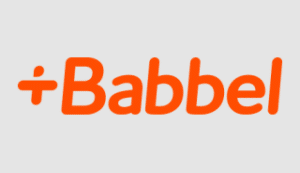
Babbel
- Multiple Subscription Options
- Money Back Guarantee
Pros
- Affordable subscription plans (as low as $7 per month)
- Short, engaging lesson format
- Quick and accurate speech recognition software
- Streamlined grammar instruction that is easy to understand
- Regular review sessions for material retention
- Modern and easy-to-use mobile app
Cons
- Verbal practice exercises are basic
- Not ideal for advanced learners
- Live classes are somewhat pricey
The Babbel Learning Framework
In comparison to other German language programs that are solely centered around receptive language skills (listening and reading) or productive language skills (speaking and writing), Babbel takes a more holistic approach to learning German.
Their lessons incorporate aspects of writing, speaking, reading, and listening, as well as grammar. Babbel believes this balanced approach is the most effective means for developing the language skills necessary to communicate in German.
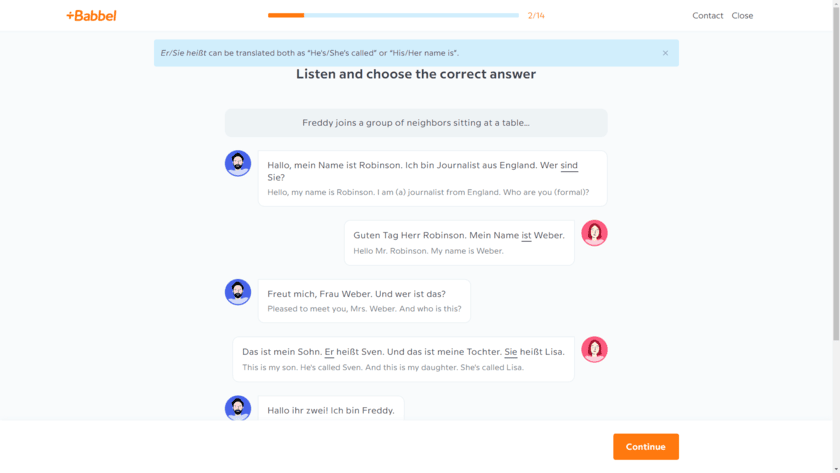
Then to augment what you learn in the standard lessons, Babbel regularly prompts you to complete review sessions as well as other games, podcasts, and stories to ensure that new vocabulary moves through your brain’s six memory stages, ultimately ending up in your long-term memory bank. That’s really the Babbel learning framework in a nutshell.
Essentially, the company incorporates the four essential skills of basic language competency into a short, engaging lesson format, and then consistently reinforces what you’ve learned through review sessions and other games. It’s pretty straightforward at the end of the day.
Babbel German Cost
Lucky for you, Babbel lands near the more affordable end of the language learning industry. Their subscription options range from around $7 to $15 per month, which puts Babbel in line with apps like Rosetta Stone and Mondly, but much cheaper than the likes of Pimsleur and Rocket German, for example.
Alternatively, Babbel also offers a lifetime subscription option, which costs around $300 (after discounts). The lifetime package includes access to all Babbel languages, not just German.
Ultimately, Babbel offers serious bang for your buck. Their subscription plans are a very good value.
Pros Explained
Now that we’ve discussed the Babbel learning framework and pricing, let’s move into the pros and cons that our team uncovered as we tested this program.
Engaging Lesson Format
Our team are big fans of the Babbel lesson format for two primary reasons. First, each lesson is short (only 5 to 10 minutes in length), which is ideal for busy professionals and parents.
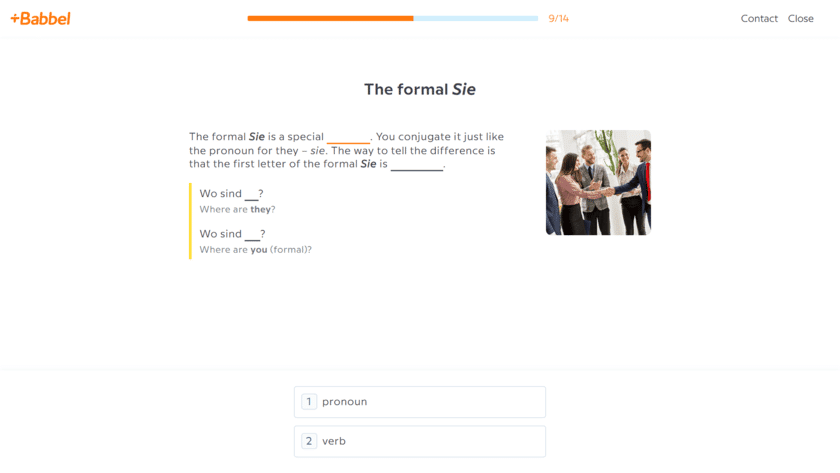
Let’s face it, most people don’t have an hour to dedicate to learning German each day, so the fact that you can quickly knock out a lesson during your lunch break or while you are in the back of an Uber is super helpful.
That way, you constantly feel like you’re making progress and you don’t get discouraged. Perhaps more importantly though, the Babbel lessons are just plain fun. They move fast and they mix in a ton of different quick hit drills and exercises across reading, writing, speaking, and listening, which keeps the learning process fun and exciting.
Accurate Speech Software
Every language company claims to have the best speech tool, but Babbel’s is actually good. It’s easy-to-use, quick, and in our experience, it’s one of the more accurate speech tools out there.
As far as pronunciation feedback goes following verbal practice exercises, you don’t have anything to worry about with Babbel. Their speech recognition technology is up there with the Rocket German voice tool.
Streamlined Grammar Instruction
Babbel does a really good job with grammar instruction. Rather than hitting you over the head with long, boring textbook style explanations, Babbel instead subtly integrates grammar insights into their lessons in the form of short one to two sentence explanations followed by a couple quick examples.
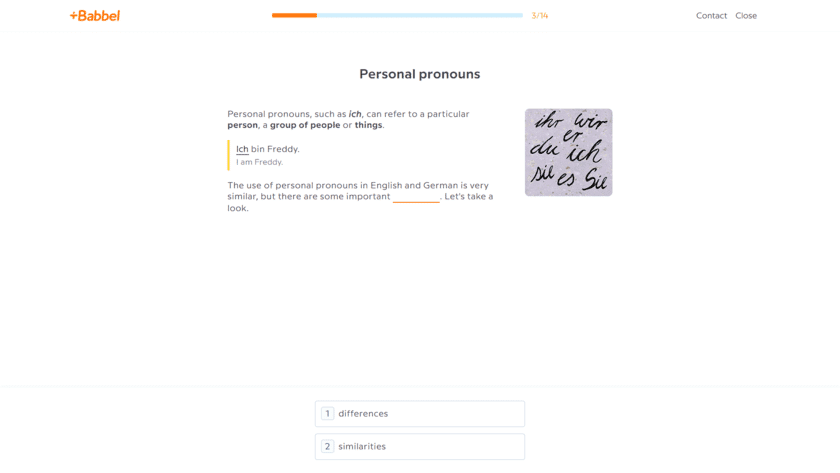
That way you have a basic understanding of the various rules behind German speech patterns, yet you don’t get bogged down in the minute details.
This is important because sometimes if there is too much focus on grammar, it can result in information overload, and actually slow down the learning process. Luckily though, Babbel somehow strikes a nice balance between detail and brevity.
Regular Review Sessions
Not only do we like that Babbel regularly prompts you to complete review sessions for material retention purposes, but we also like that Babbel gives you the choice of HOW you want to review, which is pretty cool and unique.
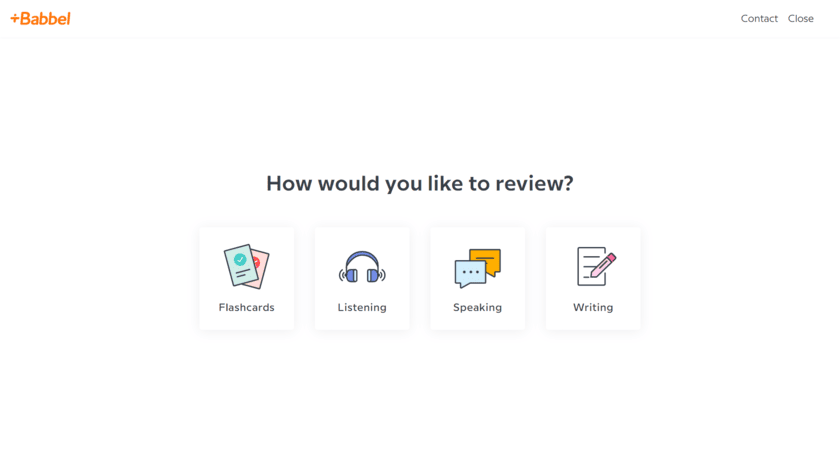
You have your choice between flashcards, listening, speaking, or writing. That way, if you feel like you are weak in a particular area, maybe you want to practice your pronunciation, for example, you can select “speaking”, and really start to hone your verbal skills.
Modern Digital Platform
Lastly, we have to give a shoutout to the Babbel digital platform and mobile app. The user experience is awesome regardless of whether you’re on a desktop computer or your phone.
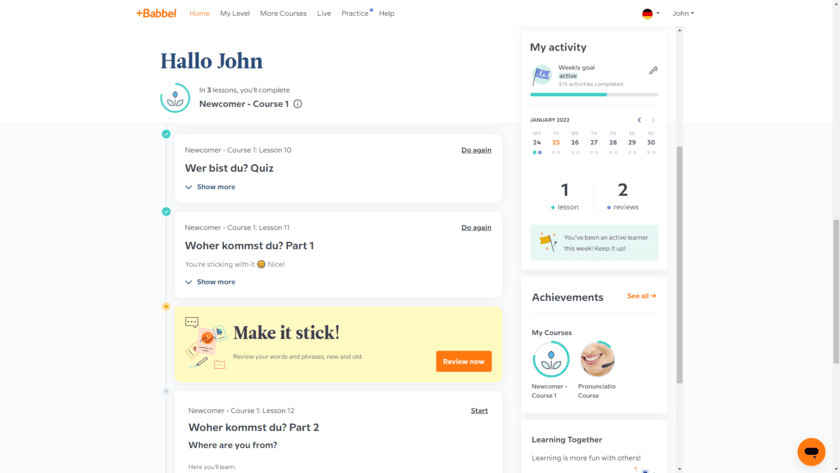
It’s clear the company has spent significant resources making sure their digital platform is modern, intuitive, and easy-to-use. It’s definitely one of the best user interfaces in the industry.
Cons Explained
Now that we’ve covered the pros, it’s only fair we also discuss the cons as well. That way, you have a balanced view of whether the Babbel German program is right for you.
Basic Verbal Drills
Our first complaint is that we wish Babbel included more in-depth verbal practice exercises. The ones included within the lessons are fine, but they are just a little more basic in nature. You’re really just asked to listen and then repeat words and phrases.
Instead, I just wish the exercises were more robust or required spontaneous language usage. In other words, some sort of exercise that simulates an actual, in-depth conversation.
Not Ideal For Advanced Learners
Since the verbal practice exercises included within the lessons are somewhat elementary, Babbel is likely not the ideal choice for advanced learners.
To be clear, Babbel will work great for beginners or even intermediate learners, but once you reach a certain level of fluency, you really need conversational practice to keep progressing, and unfortunately, you’ll start to plateau with the standard Babbel lessons.
Luckily though, Babbel does offer live classes so you can interact with expert German instructors and other learners at your level. These are an excellent way to augment the standard Babbel lessons with real conversational practice.
Live Classes Are Expensive
The only issue with the live classes is that they are somewhat expensive. The classes are not included within the standard Babbel subscription. In order to upgrade to Babbel Live, it will cost you around $50 to $100 per month, depending on which option you choose.
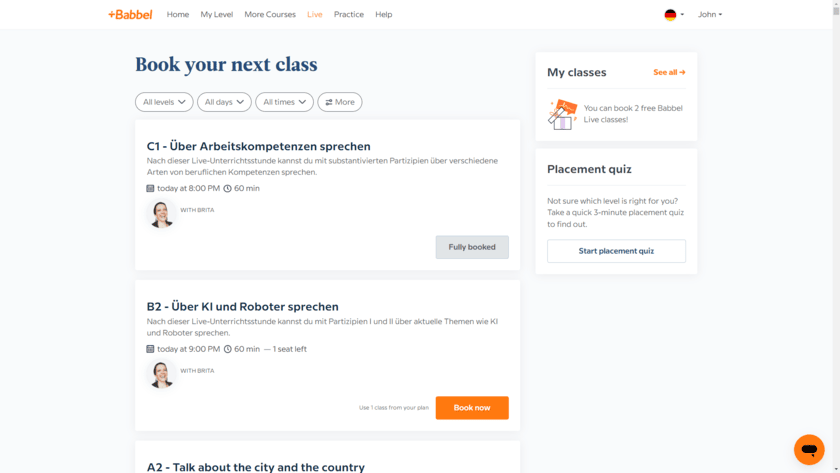
With that said, if money is not a concern, and you just want to make progress as quickly as you can, the live classes are flat out awesome. The class size is limited to only six participants so you get personalized attention and feedback from the instructor, and you can join as many classes as you’d like (there’s no cap).
Therefore, if you’re serious about learning German, you may want to think about upgrading to Babbel Live. If you do, the standard Babbel app and lessons are included free of charge.
Verdict: Is Babbel German Worth It?
It’s finally time to answer the big question – is Babbel a good choice for learning German?
Well, at this point, our team has tested well over a dozen German language programs, and we definitely think Babbel is one of the best, especially for beginners.
The lessons are short, fun, and engaging. Plus, you get exposure to receptive language skills (listening and reading) as well as productive language skills (speaking and writing). That way you start to master the four foundational language skills, not just one or two.
Not to mention, Babbel does pretty much everything else really well. For example, their speech recognition software is top-notch, and the user experience across desktop and mobile is awesome. Also, it doesn’t hurt that the standard Babbel subscriptions are very affordable.
Really the only issue is that once you reach an intermediate to advanced level of fluency, you’ll likely want to sign-up for Babbel Live, which gets expensive. Other than that, Babbel is a rock solid choice for learning German.
The Babbel German subscription plans cost between $7 and $15 per month. Babbel also sells a lifetime plan that is usually on sale for around $300.
The Babbel German program consists of 15 levels. Within each level, there are different courses that include around 5 to 15 lessons each.
If you complete the entire Babbel German course, expect to reach an intermediate level fluency. In order to reach an advanced level, you will likely need to supplement the standard Babbel lessons with conversational practice.
Yes, the Babbel app is an effective tool for learning German. In fact, it’s one of the best German language apps our team has tested.
Generally speaking, it will take around 250 hours to learn German with Babbel. This should help you reach an intermediate level of fluency.

